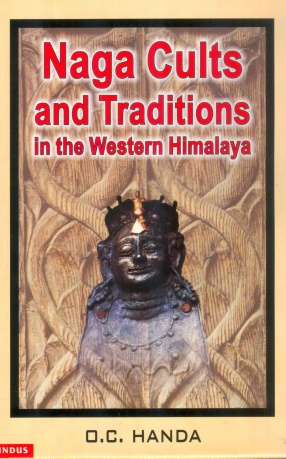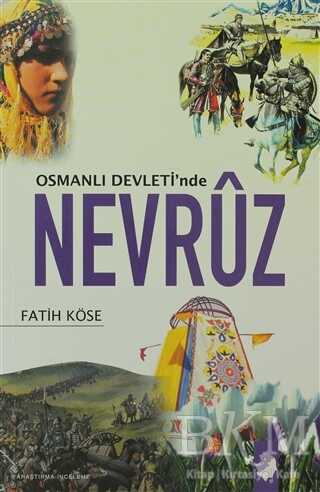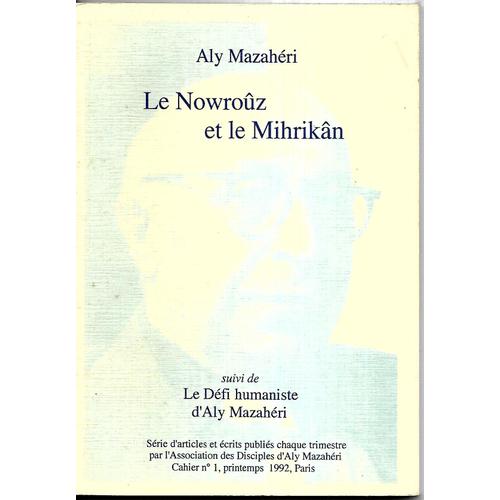April 23rd is celebrated as the Feast of St. George here at Oxford!
It is often that St. George was proclaimed as the patron saint of England at the Synod of Oxford in 1222, and though historians cast doubt on this claim, St George’s feast day has, in the minds of many, a special relationship with our city.
As it turns out, the patron “saint” of our library, the 12th c. CE poet نظامی گنجوی Niẓāmī Ganjavī, was also a huge fan of dragons, and featured them prominently in his story of the هفت پیکر Haft Paykar or “Seven Forms”.
In honour of our library’s doubly special relationship with dragons, we here at the NGL have decked our display table with a selection of literature on dragon myths from across our region of expertise.

Of course, given our namesake’s fondness for these scaly beasts, it’s no surprise that the centrepiece of our display is حسن وحید دستگردی Ḥasan Vaḥīd Dastgirdī’s 1936 CE Persian edition of نظامی گنجوی Niẓāmī Ganjavī’s Haft Paykar — one of only a number of original language editions held int he NGL’s collections.

When is a dragon not a dragon?

Various traditions within our region acknowledge numerous types of fantastic creatures which, though distinct from one another according to those traditions, are all sufficiently recognisable as dragons according to our modern conception of the term.
Across much of Eurasia, for example, there is ambiguity – both in language and, often, in form – between dragons and snakes.
In Abrahamic religions, there are numerous creatures which are variously conceived of as both snake-like and dragon-like. In Hebrew, the word תנין tannīn can refer to many such creatures – snakes, sea snakes, crocodiles, dragons, and even whales – often associated with the sea and almost always associated with evil.
Translations of the Old Testament into various languages throughout history have reflect differing interpretations of the same word in different contexts, sometimes translating תנין tannīn the same way as נחש nāḥāš “serpent”. This further reinforced the association between serpents, dragons, and the Devil.
Eventually, in some eastern Christian traditions, giant sea monsters began appearing where none existed in the Hebrew. This carving from the 10th c. Georgian ხახული Khakhuli monastery (now in Bağbaşı village, Erzurum, Turkey) is thought to depict the swallowing of Jonah by the “whale” – here nearly unrecognizable as such – though the original Hebrew refers only to a דג גדול dāg gādōl “big fish”.

Similarly snake-like are the nāga of the Indic tradition. Though the exact characteristics of nāga vary widely across South Asia, like the Hebrew תנין tannīn, the Sanskrit नाग nāga is usually supernaturally powerful and associated with water. In contrast to Canaanite serpent-dragons, however, nāga are often portrayed as part human and can be either neutral or benevolent in their interactions with the human world.
Handa’s Naga cults and traditions int he western Himalaya (2004) details the worship of nāga deities in the Western Himalaya, where they are particularly associated with the weather, agriculture, and – curiously – bees. Like snakes, nāga deities in this region spend much of their time underground or underwater, and they occasionally claim a sacrifice – probably reflecting the occasional loss of life to snakebites in the fields.
In his classic tome on Tree and serpent worship (1873) in India, also on our display, Scottish Orientalist James Fergusson theorised, in part on the basis of the absence of any mention of nāga worship in the Vedas, that the veneration of nāga in these regions of India is a remnant of indigenous traditions dating back to before the Indo-European invasion of the Subcontinent – even, perhaps, before the spread of Dravidian-speaking peoples.
Connected at different points in pre- and early history to both the Biblical תנין tannīn and the Sanskrit नाग nāga is the Avestan Aži Dahāka, the most evil demon serpent of Zoroastrianism.
The word aži is cognate to Sanskrit अहि ahi “snake”, but Aži Dahāka much more closely resembles the Biblical sea monsters than the Indian objects of worship. Where nāga can control wind and rivers, Aži Dahāka merely entreats the Zoroastrian angels of the winds and rivers to lend their power so that he may pervert it to destroy humanity.

MS. Ouseley Add. 176, f. 30a.
ضحاک Żaḥḥāk is nailed to Mount Damāvand as punishment.
In later Iranian myths, preserved most famously in Firdawsī’s epic poem شاهنامه Šāhnāma, Aži Dahāka is anthropomorphised in the form of the immortal tyrannical ruler ضحاک Żaḥḥāk who, after permitting the evil deity اهرمن Ahriman to kiss his shoulders, sprouts from them two serpents who demand to feast on human brains.
You can see this in folio 30a of Ouseley Add. 176, a beautifully illustrated Persian manuscript of the شاهنامه Šāhnāma held at the Weston Library. Some of you may also remember from our post back in March for Nowruz that the NGL hosts a number of editions of the شاهنامه Šāhnāma, so you can come read the gruesome tale of ضحاک Żaḥḥāk yourself in at least four different languages!
Incidentally, the modern Persian word for “dragon” اژدها aždahā is derived from the name of Aži Dahāka, whence also the word for “dragon” in many other languages, like Turkish ejderha and Kurmanji Kurdish ejdeha/ejdîha.
Fantastic beasts and where to find them… in a Mediaeval Turkish manuscript at the Weston!
By the Islamic Middle Ages, dragons in much of the Middle East had become, much as they had in contemporary Christian Europe, fantastic beasts of various shapes and sizes.
In an illuminated manuscript of مصلح الدین سروری Muṣliḥuddīn Sürūrī’s 17th c. CE Turkish translation of زکریا ابن محمد قزوینی Zakariyyā ibn Muḥammad Qazwīnī’s 13th c. CE عجاٸب المخلوقات ‘Ajā’ibu l-maḥlūqāt, housed here in the Weston Library (shelfmarked MS Turk. d. 2), we can see two depictions of dragons, accompanied by an explanation of their form, nature, and purported habitat.
The first (folio 140a) demonstrates how dragons in this period are depicted as largely malevolent and associated with the destructive forces of nature. Here we see repeated the common trope, whereby dragons are associated with the end of the world – here as the food for Gog and Magog, the monstrous lords who will wreak havoc upon the Earth before the Day of Judgment. The notion that Gog and Magog feast on a dragon flesh is first attested in Firdawsī’s Šāhnāma.

MS Turk d 2, folio 140a.
“And (another) one is the dragon in the sea, which harms sea creatures. God on high sends a cloud to lift it from the bottom of the sea. It has a body like a big black fish and the colour of it sends out lightning, such that if its tail as big as a tree should touch a building it would ruin it. Whatever its breath reaches burns, and that cloud raises it up to the region where Gog and Magog are and drops it there, so that it might be their food, such that each of them brings a knife and cuts it and feeds upon it […]”In a second (folios 144b-145a) depiction, we see another dragon fulfilling roles as both an object of conquest and a bearer of magic. Any man brave enough to slay it can employ its oil and meat to a variety of magical ends, further enhancing his valour and virility. In the interest of space we’ll leave them off this blog post, but you can come see these and read a translation of these folios in the NGL!
A case of mistaken identity (Part 1)
The northern half of the Armenian Highlands (composing parts of what is now Armenia, north-eastern Turkey, and southern Georgia) is littered with megaliths known in the Armenian scientific literature վիշապաքարեր višapak‘arer (singular վիշապաքար višapak‘ar) in Armenian – literally “dragon stones”.
While the dating of these stones – and, therefore, the ethno-linguistic characteristics of those who constructed them – is uncertain, they have become associated in local cultures for centuries with “dragons”, with which they share a name in local languages: Armenian վիշապ višap and Kurmanji Kurdish ejdeha.
Early research, such as Marr & Smirnov’s Les vichaps (1931), relied heavily on this association in their analysis of these stones. They note that an early Georgian translation of the Bible employs the word ვეშაპი vešap’i for the sea creature which swallows Jonah, often confused with a whale. They further suggest that the location of the dragon stones near high-altitude lakes and rivers seems to suggest an affiliation with water, which is also a characteristic of dragons in pre-Christian Armenian folklore. If the dragon stones were sites of veneration of dragon-like water deities for ancient Armenians, they argue, the veneration of the fire god Վահագն Վիշապաքաղ Vahagn Višapak‘ał “Vahagn Dragon-culler” and the vilification of dragons by later Armenians may suggest successive inversions of older beliefs by Zoroastrian and Christian authors.
Later research, such as Капанцян Kapant͡si͡an‘s О каменных стелах на горах Армении O kamennykh stelakh na gorakh Armenii (1952), has preferred to analyse the stones outside the context of their later mythical association with dragons. They identify the two figures which frequently appear on these stones as a “fish” and a “sacrificial animal” – probably a bull – but the popular association with dragons and the name višapak‘ar has remained.

A case of mistaken identity (Part 2)
With a name like “Georgia”, you might expect the largely Orthodox Christian Caucasian nation to celebrate St. George’s feast day – and indeed it does, though not when you might expect.
The festival of გიორგობა Giorgoba in Georgia is celebrated differently and at different times in different parts of Georgia, with common dates being 6 May, 23 November, and 14 August. Even the name of the holiday differs from place to place, though the association with St. George remains. Veneration of St. George in general is common across the country – so much so that, upon its independence from the Russian Empire, the short-lived Democratic Republic of Georgia made St. George its patron saint, as he remains to this day. You can read all about the various folk incarnations of St. George in Charachidzé (1968)’s Le système religieux de la Géorgie paienne.

You may be surprised to learn, then, that the country was not named after the saint – at least not originally. While the country bears the name Georgia (or names like it) in English and many European languages, the name for the country in Georgian is საქართველო Sakartvelo, ultimately related to a geographical term and ethnonym from a certain part of the country. The common European name seems to stem from the Persian ethnonym گرچی gurjī, ultimately probably related to the word گرگ gurg “wolf”, transformed by European pilgrims to the Holy Land some time during the Middle Ages – perhaps noting Georgian pilgrims’ veneration of St. George.
Funnily enough, while the story of St. George and the Dragon is known in Georgia, it does not seem to have played a major role in his traditional veneration. Instead, Charachidzé argues, many of the St. George myths from Georgia are ported over from pagan myths, usually of an old lunar deity.
Pre-Christian Georgian mythology does, however, feature dragons – usually known as გველისფერები gvelisperebi (singular გველისფერი gvelisperi), literally ‘serpent-coloured’ or ‘serpent-like’. In some legends, the გველისფერები gvelisperebi are servants or guards of certain gods or demigods. In others, they specifically guard the entrance to the underworld and are at war with the birds – sometimes eagles or the phoenix-like ფასკუნჯი Pask’unji – perhaps betraying an older association with the earth and water in opposition to the sky and fire.










